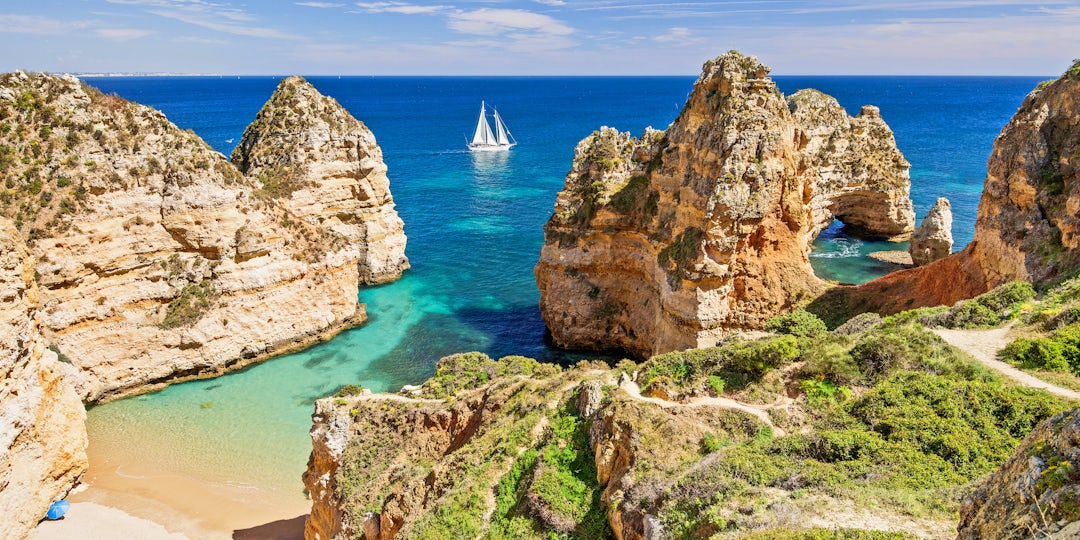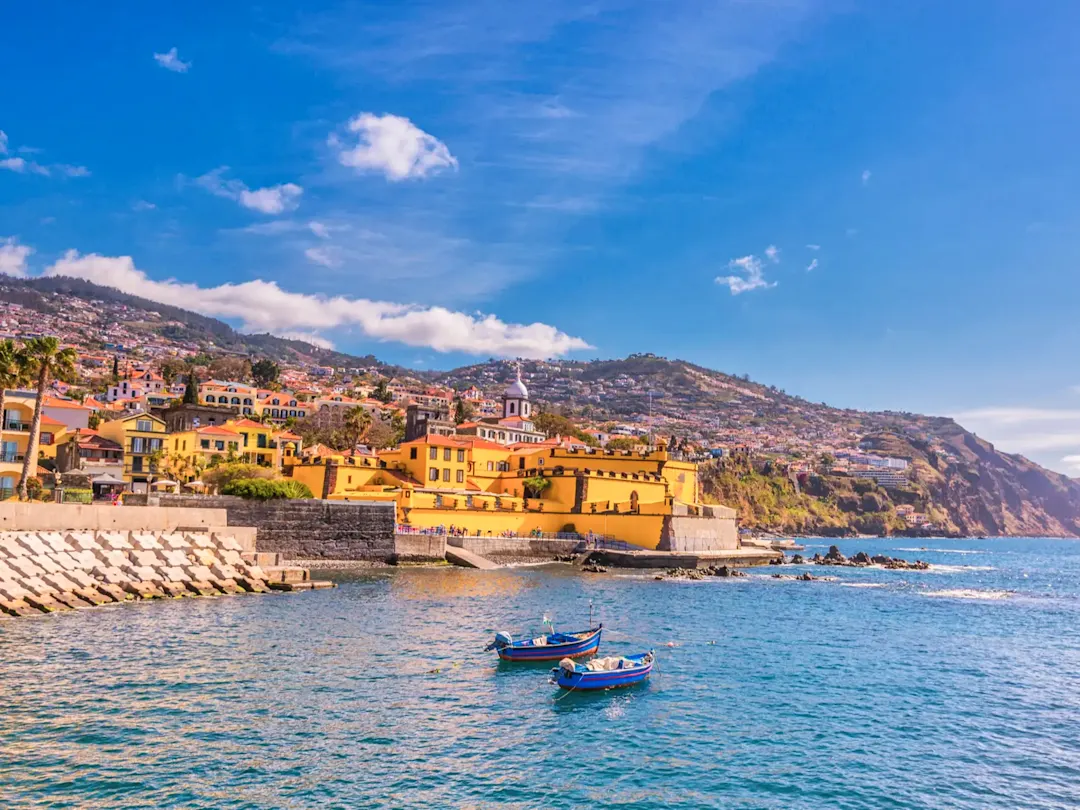

The best time to travel to the Azores
Portugal's breathtaking archipelago
Plan your Trip
Your tailor-made itinerary – No cost, no commitment
Excellent
4.5 of 5
4,587Reviews
Excellent
Plan your Trip
Your tailor-made itinerary – No cost, no commitment
Our expert recommendation
The best time to visit the Azores is between June and October. During this time, the archipelago boasts optimal weather conditions and pleasant temperatures, which are ideal for hiking, swimming and active vacations.

Raphaela Wedel
Tourlane travel expert for Portugal
Updated on 11/24/2025
Plan for free
Custom holiday packages and trips that fit your budget
Personalized for you
Itineraries built exactly to your needs
Private VIP guides
A personal English-speaking, native-European travel expert for every step
Peace-of-mind support
Full service assistance before, during, and after your trip
The Gulf Stream has an immense influence on the climate of the Azores. And although the year is divided into spring, summer, fall and winter, a distinction is made between the drier and rainier months. While the subtropical climate of the archipelago impresses with temperatures between 64 and 77 °F all year round, the fall and winter between October and April can be particularly rainy. Nevertheless, the mild climate makes the Azores a destination that you can visit all year round.

Azores in the high season
The high season in the Azores runs from June to August. This is when the weather on the archipelago is reliably stable, so you can enjoy the unique nature and beautiful surroundings with summer temperatures, long hours of sunshine and comparatively little rain. It is also warm enough to swim in the Azores during this time. At the same time, it is not too hot for extensive hikes. Or you can use your visit to observe the whales passing by off the coast of the archipelago at close range.

Azores in the low season
The low season in the Azores begins immediately after the high season. This extends well into October and allows visitors to the archipelago to enjoy the breathtaking nature of the Azores without the usual groups of tourists. While the temperatures are still pleasantly warm and the weather is ideal for an active vacation , you can expect some additional rain showers. Nevertheless, you still have the opportunity to go whale watching, hiking or sailing off the coast of the archipelago during the low season.

Azores in the low season
From November to May, things become noticeably quieter in the Azores. This is because there is more rainfall on the archipelago during the low season. Nevertheless, this time is particularly suitable for nature lovers and amateur photographers. If you can put up with the regular rain showers, you can enjoy the lush green nature and fascinating flora of the Azores in peace and quiet. Only in winter do the Azores experience strong winds and storms, which make exploring the great outdoors more difficult.

“Visit the picturesque island of Pico between May and October and experience the breathtaking nature of the Azores up close. From June to October in particular, you can enjoy unforgettable hikes, whale watching and, last but not least, a relaxing beach vacation.”

Raphaela Wedel
Travel expert for Portugal

Hiking
If you want to go hiking in the Azores, you should plan a trip between June and October. This is because this time of year offers ideal weather conditions with pleasant summer temperatures, low humidity and only sporadic rainfall. At the same time, the hydrangea blossom on the archipelago begins at the end of June, so outdoor fans can enjoy the already spectacular nature of the archipelago in all imaginable colors.

Diving & Snorkeling
The best time to go diving in the Azores is during the high season or mid-season from June to October. During these months, the water temperatures are particularly pleasant, which means you can also go snorkeling in the Azores. In addition, there are only occasional rain showers and the winds typical of winter are absent. However, due to the changeable weather on the archipelago, a calm sea is not guaranteed even at this time of year.

Surfing
Would you like to use a visit to the Azores for surfing or surfing? Then the period from May to October is particularly suitable, when pleasant temperatures and moderate winds ensure optimal conditions. However, experienced surfers will find strong winds and fantastic waves off the coast of the Azores, especially during the winter months!

Whale watching
Whale watching in the Azores is generally possible from May to October. Depending on the time of year and the island, you can observe up to 38 different species of dolphins and whales such as orcas, humpback whales, sperm whales, blue whales and fin whales at close range.





































































































































































